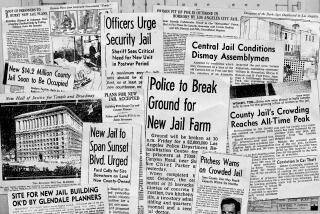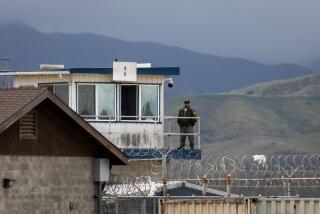Danger in Prison Overcrowding
- Share via
California’s prisons now house a record 162,000 inmates, more than ever and more than any other state. Prison capacity--a bean counter’s term to measure how tightly people are packed into these institutions--is at a claustrophobic 193%; the prisons now contain almost twice as many men and women as called for in their original designs.
These days, most who enter the state’s prisons are there because of “three strikes and you’re out,” the law that imposes stiff, fixed terms for repeat offenders. Among the toughest in the nation, California’s 1994 three-strikes law mandates life in prison upon conviction for any third felony. The prison population of second- and third-strikers, many of whom are young, is already 35,000.
On Sunday, Gov. Gray Davis vetoed a modest bill that would have asked the state legislative analyst to study the costs and benefits of the three-strikes law. Other institutions, including the Rand Corp., have looked at this issue and concluded that the law is overly harsh and expensive. Targeting just repeat offenders convicted of violent or serious felonies, instead of any felony, is a more focused and effective use of tax dollars. A growing number of legislators are starting to agree but want the imprimatur of a state-funded study before sticking their necks out.
Davis’ unwise veto of the measure surely was influenced by fear of a soft-on-crime tag. Now he must do much more to relieve worsening prison overcrowding. Davis recently authorized construction of one new prison, a medium- and maximum-security facility in Delano, but it won’t open until 2003 and will hold only 5,000 inmates. No other state prison projects are in the pipeline or even under consideration. Intolerably overcrowded prisons make rehabilitation impossible and could easily be the spark that sets off violence.
More to Read
Sign up for Essential California
The most important California stories and recommendations in your inbox every morning.
You may occasionally receive promotional content from the Los Angeles Times.










